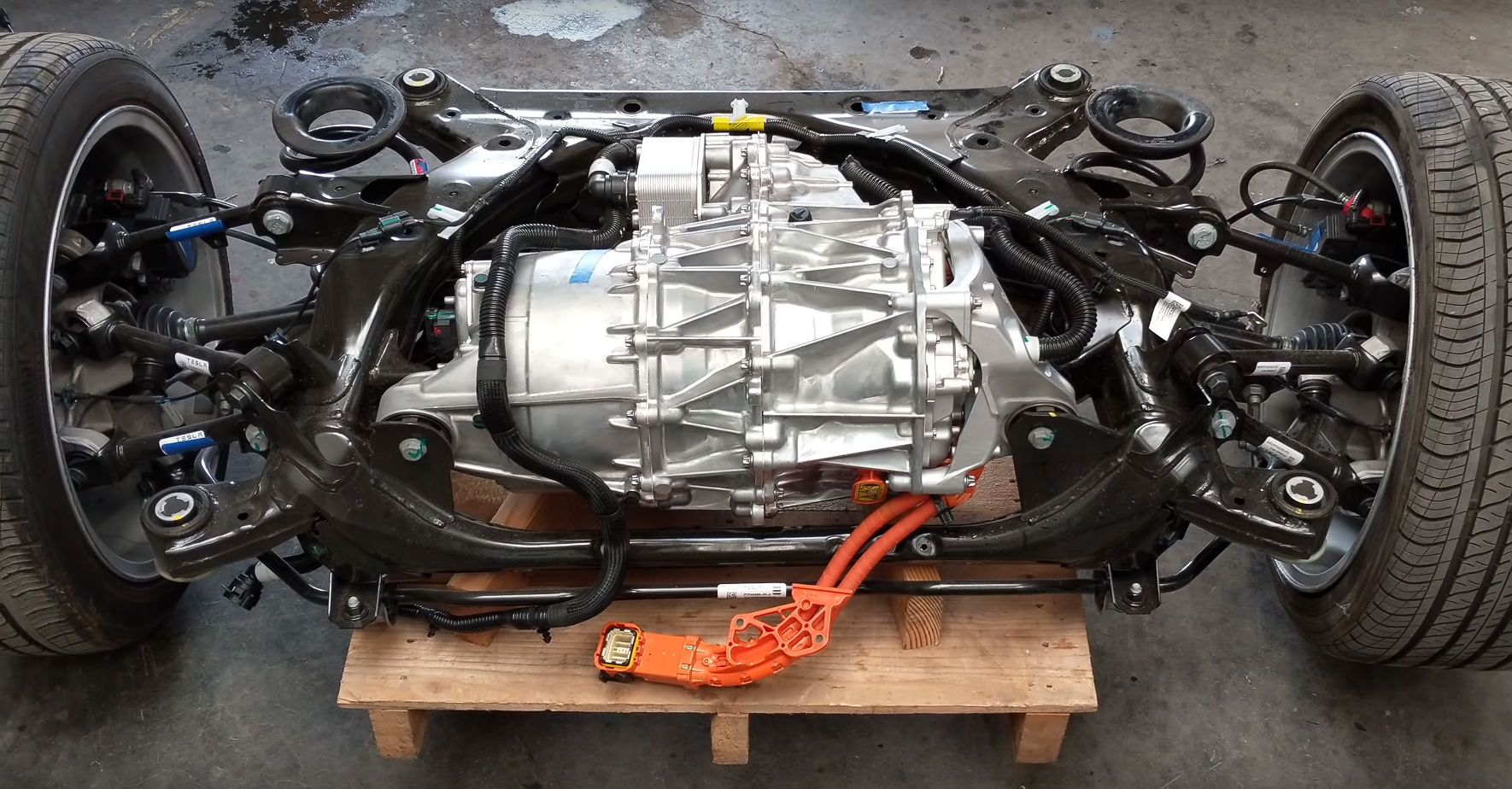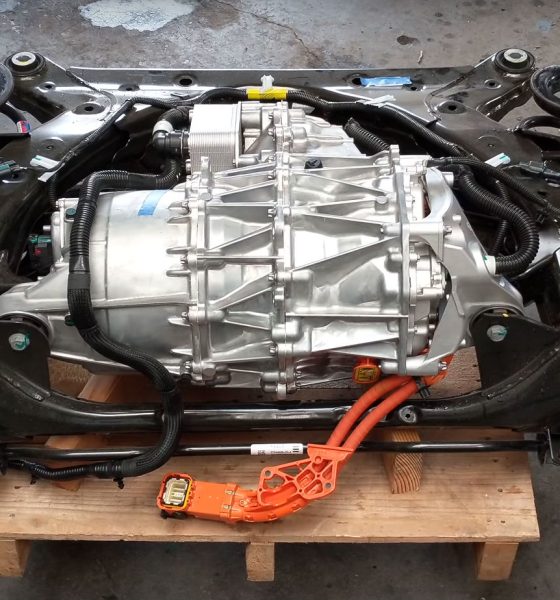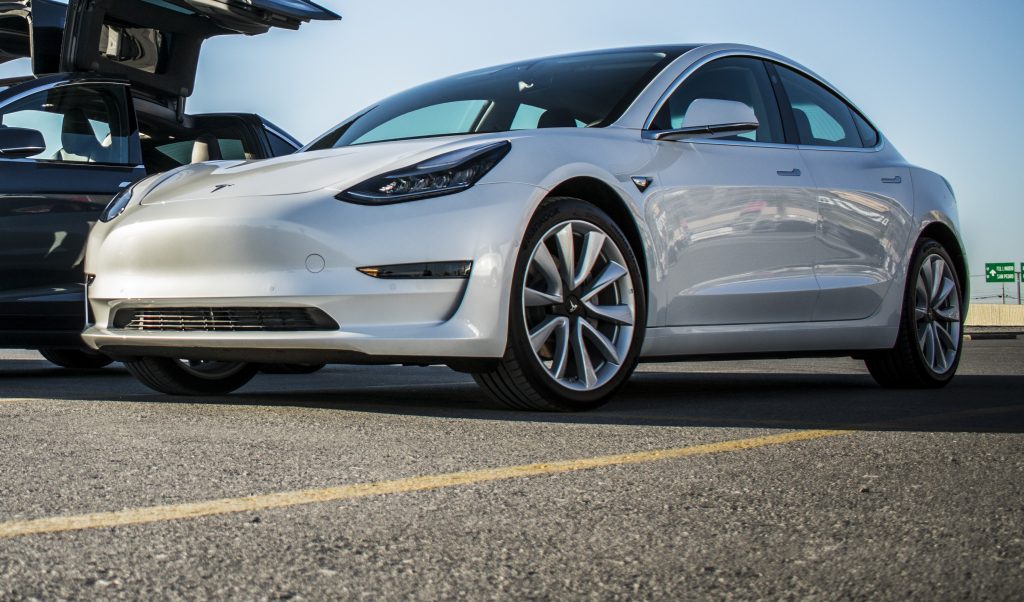

News
Tesla engineers share Model 3 steering, drivetrain, and suspension secrets
The Tesla Model 3 is practically taking over the electric car market, establishing a strong presence in every region where it is released. A key reason behind this lies in the fact that the Model 3 happens to be a really fine automobile that just happens to be electric. It’s quick on its feet, handles nimbly despite its weight, and it provides a ride that is both sporty and comfortable.
One of the UK’s most established motoring magazines, Autocar, spoke with a number of Tesla engineers to gain some insights on the design and development process of the Model 3. The result was an extensive discussion in how a clean-sheet design and a serious commitment to safety could make all the difference when creating a car that is, for all intents and purposes, intended to reinvent the automobile.
Tires
Immediately emphasized by the Tesla engineers was that the Model 3’s chassis and suspension were designed using a ‘first principles’ clean-sheet approach. This started with the Model 3’s tires, which the engineers fondly described as the “unsung heroes” of the vehicle, being critical to its feel and drivability. The development of the Model 3’s tires began back in 2015, when Tesla started working with manufacturers to create the ideal tires for the electric sedan.
The engineers noted that the tires of a high-performance electric car like the Model 3 are challenged in different ways compared to gas-powered automobiles. This is due to a number of factors, including the vehicle’s weight and its instant torque. Since the bulk of an EV’s mass is situated lower down compared to a vehicle with an internal combustion engine, there is less vertical force buildup on the outside pair of tires to generate grip when cornering.
To address this, Tesla focused on tread stiffness, even developing new compounds to deliver a good combination of cornering grip and low rolling resistance for the Model 3’s tires. Sound-absorbing foam placed inside the tire cavity further increases comfort during driving by suppressing noise. The Model 3’s rear wheels hold some interesting secrets as well. The engineers revealed that each rear wheel of the electric sedan has six degrees of freedom, with five links and one damper, though the links are split to allow superior control over forces that are transmitted through the vehicle’s tire contact patch.

Safety Systems and Steering
The Model 3 has earned a perfect 5-Star Safety Rating from the NHTSA, the Euro-NCAP, and the ANCAP. This comes as no surprise, considering that the vehicle is designed from the ground up to emphasize safety. The Model 3’s front suspension, for example, was specifically designed to provide maximum protection in small-overlap frontal collision crash tests.
Sacrificial links that are designed to snap when the front wheel and suspension get damaged are also integrated into the vehicle, allowing the Model 3’s front wheels to rotate. This moves the front wheels outside the Model 3’s body, while pushing the car, its occupants, and its battery pack from the point of impact. These safety systems extend to the Model 3’s dual-motor AWD variants as well.
Tesla designed the Model 3’s electric power steering system to have a rapid 10:1 ratio. The power steering is equipped with full redundancy with separate power feeds taken directly from the vehicle’s high-voltage battery. The engineers also mentioned two electronic modules and two inverters providing “hot backup” to the system if one fails.
Brakes
The Model 3’s braking system is quite unique, in the way that Tesla opted to equip the electric sedan with more expensive four-pot brake calipers at the front wheels instead of a single-piston sliding mechanism. This gives the Model 3 superior pedal response, and it opened the door for the electric car maker to design its own piston seals that fully retract the brake pads after braking; thus, boosting available driving range and cutting drag. Such a system adds to the Model 3’s efficiency, which has proven superior to other premium electric vehicles like the Audi e-tron and the Jaguar I-PACE.
Elon Musk has mentioned multiple times in the past that brake pads in a Tesla will last for the lifetime of a vehicle. This is no exaggeration, according to the Tesla engineers, who noted that the Model 3’s discs and brake pads are designed to last for around 150,000 miles. This is made possible by the Model 3’s regenerative braking system, which allows drivers to slow down the vehicle without using its physical brakes. As for rust issues, the engineers pointed out that Tesla has developed new anti-corrosion techniques for its electric cars.

Suspension
Perhaps the most interesting tidbit discussed by the Tesla engineers involved the Model 3’s suspension. In true Elon Musk fashion, Tesla actually used concepts from NASA when it was refining the suspension settings of the electric sedan. The electric car maker based the Model 3’s suspension settings on a study by the space agency about how long the human body can be subjected to a certain frequency without feeling uncomfortable. Considering that the vertical frequency of a suspension’s movement affects comfort and drivability, Tesla engineers settled on a vertical frequency that is equivalent to a brisk walk or a slow run to give the Model 3’s chassis a comfortable, sporty feel.
The Model 3’s suspension has impressed a number of industry experts, among them being automotive veteran and teardown expert Sandy Munro of Munro and Associates. During his teardown of the vehicle, Munro noted that the Model 3 has areas of improvement in its body and finish, but everything from the electric car’s suspension, all the way down to its tires, is flawless. In a segment on YouTube’s Autoline TV, Munro mentioned that the person who tuned the Model 3’s suspension could easily be an “F1 Prince.”
During the electric car maker’s second-quarter earnings call, Elon Musk mentioned that the “story for Tesla’s future is fundamentally Model 3 and Model Y.” While the Model S and Model X were made to prove that electric vehicles could be superior alternatives to gas-powered premium sedans and SUVs, the more affordable Model 3 — and in extension, the Model Y — would likely be the cars that could reinvent the automobile and encourage mass-market car buyers to rethink what a vehicle could be like. Based on the Model 3’s success so far, it appears that Tesla is so far succeeding in this endeavor.
H/T to JPR007.

Elon Musk
Elon Musk’s X will start using a Tesla-like software update strategy
The initiative seems designed to accelerate updates to the social media platform, while maintaining maximum transparency.

Elon Musk’s social media platform X will adopt a Tesla-esque approach to software updates for its algorithm.
The initiative seems designed to accelerate updates to the social media platform, while maintaining maximum transparency.
X’s updates to its updates
As per Musk in a post on X, the social media company will be making a new algorithm to determine what organic and advertising posts are recommended to users. These updates would then be repeated every four weeks.
“We will make the new 𝕏 algorithm, including all code used to determine what organic and advertising posts are recommended to users, open source in 7 days. This will be repeated every 4 weeks, with comprehensive developer notes, to help you understand what changed,” Musk wrote in his post.
The initiative somewhat mirrors Tesla’s over-the-air update model, where vehicle software is regularly refined and pushed to users with detailed release notes. This should allow users to better understand the details of X’s every update and foster a healthy feedback loop for the social media platform.
xAI and X
X, formerly Twitter, has been acquired by Elon Musk’s artificial intelligence startup, xAI last year. Since then, xAI has seen a rapid rise in valuation. Following the company’s the company’s upsized $20 billion Series E funding round, estimates now suggest that xAI is worth tens about $230 to $235 billion. That’s several times larger than Tesla when Elon Musk received his controversial 2018 CEO Performance Award.
As per xAI, the Series E funding round attracted a diverse group of investors, including Valor Equity Partners, Stepstone Group, Fidelity Management & Research Company, Qatar Investment Authority, MGX, and Baron Capital Group, among others. Strategic partners NVIDIA and Cisco Investments also continued support for building the world’s largest GPU clusters.
News
Tesla FSD Supervised wins MotorTrend’s Best Driver Assistance Award
The decision marks a notable reversal for the publication from prior years, with judges citing major real-world improvements that pushed Tesla’s latest FSD software ahead of every competing ADAS system.

Tesla’s Full Self-Driving (Supervised) system has been named the best driver-assistance technology on the market, earning top honors at the 2026 MotorTrend Best Tech Awards.
The decision marks a notable reversal for the publication from prior years, with judges citing major real-world improvements that pushed Tesla’s latest FSD software ahead of every competing ADAS system. And it wasn’t even close.
MotorTrend reverses course
MotorTrend awarded Tesla FSD (Supervised) its 2026 Best Tech Driver Assistance title after extensive testing of the latest v14 software. The publication acknowledged that it had previously criticized earlier versions of FSD for erratic behavior and near-miss incidents, ultimately favoring rivals such as GM’s Super Cruise in earlier evaluations.
According to MotorTrend, the newest iteration of FSD resolved many of those shortcomings. Testers said v14 showed far smoother behavior in complex urban scenarios, including unprotected left turns, traffic circles, emergency vehicles, and dense city streets. While the system still requires constant driver supervision, judges concluded that no other advanced driver-assistance system currently matches its breadth of capability.
Unlike rival systems that rely on combinations of cameras, radar, lidar, and mapped highways, Tesla’s FSD operates using a camera-only approach and is capable of driving on city streets, rural roads, and freeways. MotorTrend stated that pure utility, the ability to handle nearly all road types, ultimately separated FSD from competitors like Ford BlueCruise, GM Super Cruise, and BMW’s Highway Assistant.
High cost and high capability
MotorTrend also addressed FSD’s pricing, which remains significantly higher than rival systems. Tesla currently charges $8,000 for a one-time purchase or $99 per month for a subscription, compared with far lower upfront and subscription costs from other automakers. The publication noted that the premium is justified given FSD’s unmatched scope and continuous software evolution.
Safety remained a central focus of the evaluation. While testers reported collision-free operation over thousands of miles, they noted ongoing concerns around FSD’s configurable driving modes, including options that allow aggressive driving and speeds beyond posted limits. MotorTrend emphasized that, like all Level 2 systems, FSD still depends on a fully attentive human driver at all times.
Despite those caveats, the publication concluded that Tesla’s rapid software progress fundamentally reshaped the competitive landscape. For drivers seeking the most capable hands-on driver-assistance system available today, MotorTrend concluded Tesla FSD (Supervised) now stands alone at the top.
News
Elon Musk’s Grokipedia surges to 5.6M articles, almost 79% of English Wikipedia
The explosive growth marks a major milestone for the AI-powered online encyclopedia, which was launched by Elon Musk’s xAI just months ago.

Elon Musk’s Grokipedia has grown to an impressive 5,615,201 articles as of today, closing in on 79% of the English Wikipedia’s current total of 7,119,376 articles.
The explosive growth marks a major milestone for the AI-powered online encyclopedia, which was launched by Elon Musk’s xAI just months ago. Needless to say, it would only be a matter of time before Grokipedia exceeds English Wikipedia in sheer volume.
Grokipedia’s rapid growth
xAI’s vision for Grokipedia emphasizes neutrality, while Grok’s reasoning capabilities allow for fast drafting and fact-checking. When Elon Musk announced the initiative in late September 2025, he noted that Grokipedia would be an improvement to Wikipedia because it would be designed to avoid bias.
At the time, Musk noted that Grokipedia “is a necessary step towards the xAI goal of understanding the Universe.”
Grokipedia was launched in late October, and while xAI was careful to list it only as Version 0.1 at the time, the online encyclopedia immediately earned praise. Wikipedia co-founder Larry Sanger highlighted the project’s innovative approach, noting how it leverages AI to fill knowledge gaps and enable rapid updates. Netizens also observed how Grokipedia tends to present articles in a more objective manner compared to Wikipedia, which is edited by humans.
Elon Musk’s ambitious plans
With 5,615,201 total articles, Grokipedia has now grown to almost 79% of English Wikipedia’s article base. This is incredibly quick, though Grokipedia remains text-only for now. xAI, for its part, has now updated the online encyclopedia’s iteration to v0.2.
Elon Musk has shared bold ideas for Grokipedia, including sending a record of the entire knowledge base to space as part of xAI’s mission to preserve and expand human understanding. At some point, Musk stated that Grokipedia will be renamed to Encyclopedia Galactica, and it will be sent to the cosmos.
“When Grokipedia is good enough (long way to go), we will change the name to Encyclopedia Galactica. It will be an open source distillation of all knowledge, including audio, images and video. Join xAI to help build the sci-fi version of the Library of Alexandria!” Musk wrote, adding in a later post that “Copies will be etched in stone and sent to the Moon, Mars and beyond. This time, it will not be lost.”








